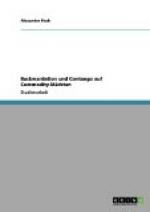|
This section contains 754 words (approx. 3 pages at 300 words per page) |

|
Normal Backwardation
Summary: First introduced by John Maynard Keynes in his 1930 book A Treatise on Money, the theory of normal backwardation applies to commodity futures. The theory holds that futures prices will be bid down to a level below the expected spot price and will rise over the contract life as a reward to risk-assuming speculators for which risk-averse net short hedgers pay. Studies that have tested Keynes' theory over the years are practically split evenly between those supporting the theory and those opposing it.
The two patterns of futures prices are known as the `normal backwardation' and the `contango'. This paper only talks about the `normal backwardation', and will firstly explain the definition, and then, will discuss briefly about the empirical evidences and the debate on it.
Normal backwardation was firstly introduced by John Maynard Keynes in his `Treatise on Money' (1930), as he argued that the normal backwardation, is the expectation that futures prices will rise over the contract life, as a reward to risk-assuming speculators which is paid for by risk-averse net short hedgers--should prevail for commodity futures. (Richard Deaves and Itzhak Krinsky, 1995)
We have an example here, an apple farmer takes a long position in apple, because he grows and owns the apples, here the farmer is the hedger, and hedgers usually more risk-averse than the speculators, thus this farmer would like to sell apple futures to reduce his risk...
|
This section contains 754 words (approx. 3 pages at 300 words per page) |

|


